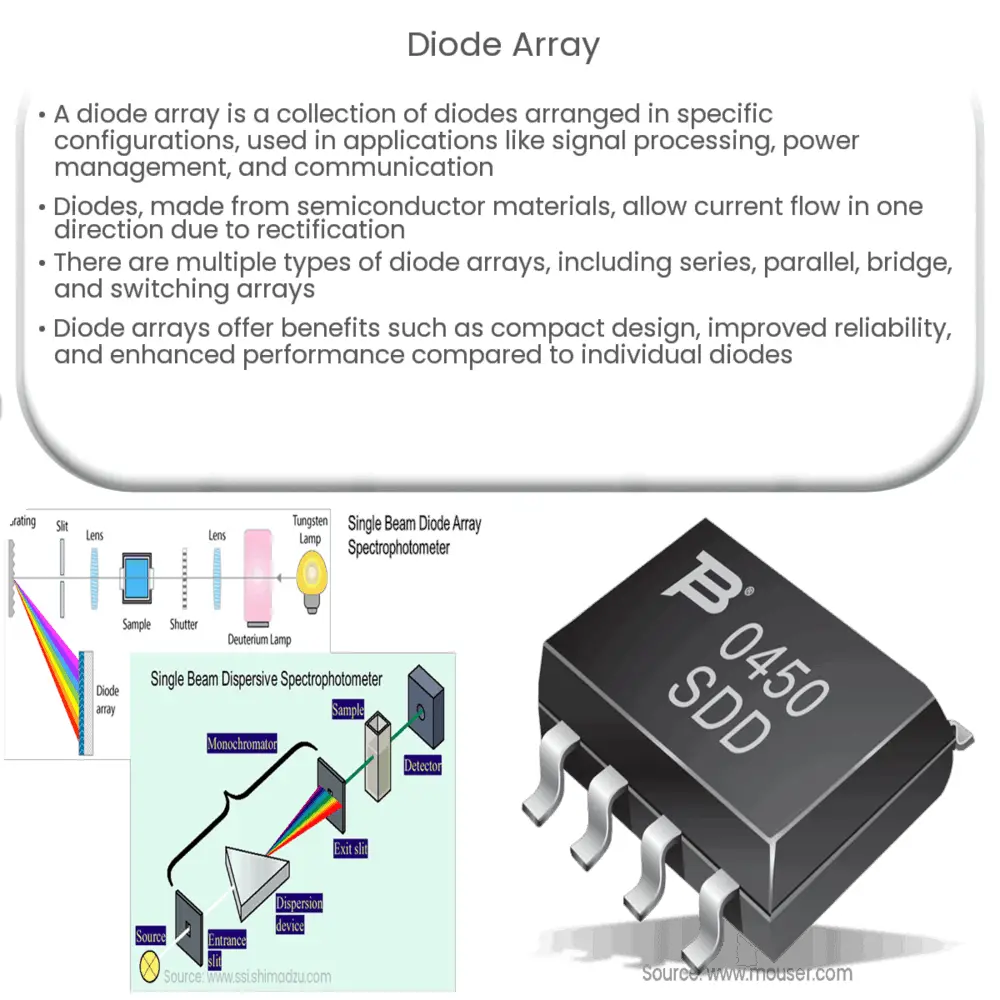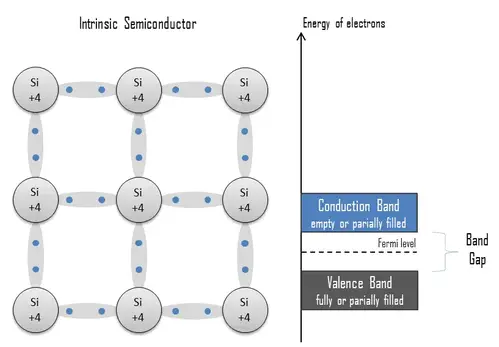A diode array is a collection of diodes in a single package, used in applications like power management, signal processing, and voltage regulation.

Diode Array: An Introduction
Overview
A diode array is a collection of semiconductor devices called diodes that are arranged in a specific configuration. Diodes are fundamental electronic components that allow current to flow in one direction, while blocking it in the opposite direction. Diode arrays are widely used in various applications, including signal processing, power management, and communication systems. In this article, we will explore the basic principles of diode arrays, their types, and common applications.
Basic Principles of Diode Arrays
Diodes are made from semiconductor materials like silicon or germanium, which have unique electrical properties. When two differently doped semiconductor materials are combined, a junction is formed, creating a diode. This junction allows current to flow easily in one direction (forward-biased) but not in the other (reverse-biased). This behavior is referred to as rectification, and it is the primary function of a diode.
A diode array combines multiple diodes into a single package, allowing them to share a common cathode or anode. This arrangement is advantageous for various reasons, such as simplifying circuit design, reducing component count, and improving overall system reliability. Diode arrays can be designed to perform specific tasks, like voltage regulation, transient voltage suppression, or signal rectification.
Types of Diode Arrays
There are several types of diode arrays, each with its unique characteristics and applications. Some common types include:
- Series diode array: In this configuration, diodes are connected in a series, meaning the anode of one diode is connected to the cathode of the next. This type of array is useful in applications where voltage regulation or drop is needed, such as in power supplies.
- Parallel diode array: Diodes are connected in parallel, with all anodes connected together and all cathodes connected together. This configuration allows for higher current capacity and is used in applications like power management and signal processing.
- Bridge diode array: A bridge diode array consists of four diodes arranged in a bridge configuration. It is commonly used to convert alternating current (AC) to direct current (DC) in power supplies and other electronic devices.
- Switching diode array: This type of diode array is designed for fast switching speeds, making them ideal for high-frequency applications such as radiofrequency (RF) communication systems and digital signal processing.
Common Applications of Diode Arrays
Diode arrays are used in a wide range of applications, some of which include:
- Power management: Diode arrays can be used in voltage regulators, DC-DC converters, and power supplies to ensure stable and efficient power delivery to electronic devices.
- Signal processing: Diode arrays can be employed in signal rectification, filtering, and mixing, making them essential components in communication systems and audio equipment.
- Transient voltage suppression: Diode arrays can be used to protect sensitive electronic components from voltage spikes and surges, ensuring the reliability and longevity of the devices.
- Optoelectronics: Diode arrays can be found in devices such as light-emitting diodes (LEDs) and photodiodes, which are used for lighting, sensing, and
communication purposes. - Rectification: Diode arrays, specifically bridge diode arrays, are widely used to convert AC to DC in various electronic devices, such as power supplies and battery chargers.
- Switching: High-speed switching diode arrays are essential components in radiofrequency (RF) communication systems, digital signal processing, and high-frequency circuits.
Advantages of Diode Arrays
Using diode arrays offers several benefits over individual diodes, such as:
- Compact design: Diode arrays reduce the number of individual components in a circuit, leading to a more compact and simplified design.
- Improved reliability: With fewer components, the overall system reliability is increased, as there are fewer points of potential failure.
- Reduced parasitic effects: By sharing a common anode or cathode, diode arrays can minimize the parasitic inductance and capacitance effects that can occur in individual diodes.
- Enhanced performance: Diode arrays can be designed to perform specific tasks with improved efficiency and performance compared to individual diodes.
Conclusion
Diode arrays are an essential component in many electronic devices, offering numerous advantages over individual diodes. With various types of diode arrays available, they can be tailored to suit a wide range of applications, such as power management, signal processing, and transient voltage suppression. By understanding the basic principles, types, and applications of diode arrays, engineers and designers can create more efficient, reliable, and compact electronic systems.



